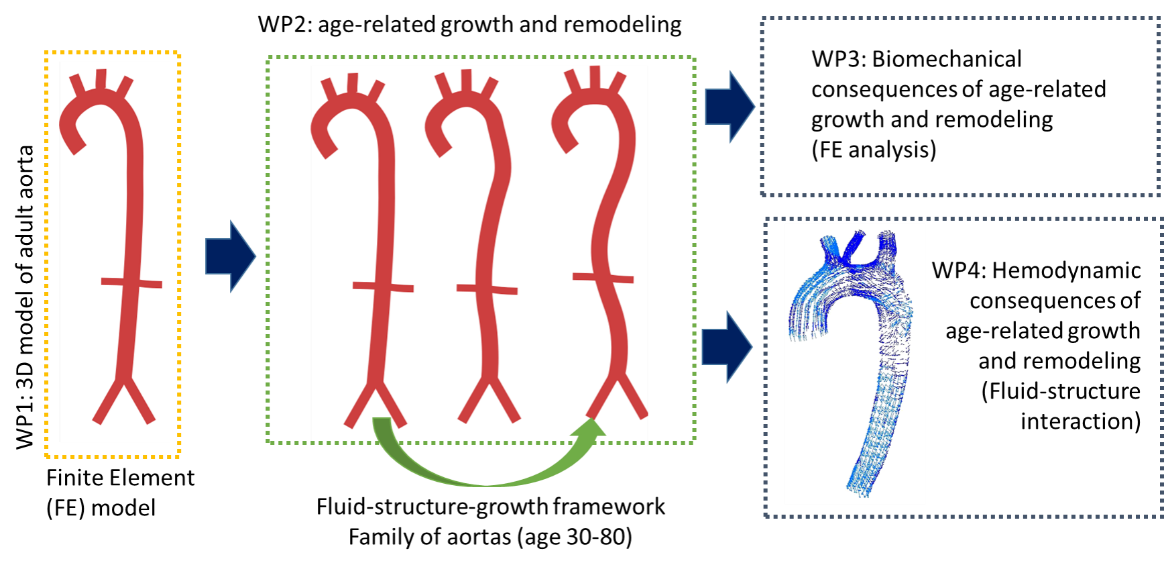Elastin is considered to play a pivotal role in the age-related growth and remodeling of the elastic central vessels. Elastin is deposited only during early pre- and perinatal development and has a half-life of about 40 years, implying that the elastin that an individual is born with, will serve for his/her entire lifetime3. This also means that the elastin deposited in early life undergoes large deformations upon somatic growth of the body and blood vessels. This is in contrast with collagen and other matrix constituents, which have a natural turnover rate with concomitant breakdown of existing and deposition of new material. The adult aorta and elastic vessels are therefore under large axial tension with stretch ratios of up to 1.8 (well known to vascular surgeons as arteries retract when being cut). With ageing and the seemingly inevitable elastin degradation, the axial tension regresses, leading to an increased tortuosity of arteries. With ageing, there is also a progressive dilatation of central arteries ascribed to remodeling, possibly also driven by the loss in axial pre-stretch. While the effect of ageing on aortic structure and function is reasonably well understood and believed to be driven by growth and remodeling responses in relation to the slow degradation of elastin (with its concomitant impact on blood pressure levels, further contributing to the remodeling), this mechanism is yet to be implemented and validated in a computational framework that is capable of encompassing the fluid-structure-growth dimension. The overall objective of this research project is therefore to develop and implement a computational biomechanics fluid-structure-growth framework of the human aorta.
